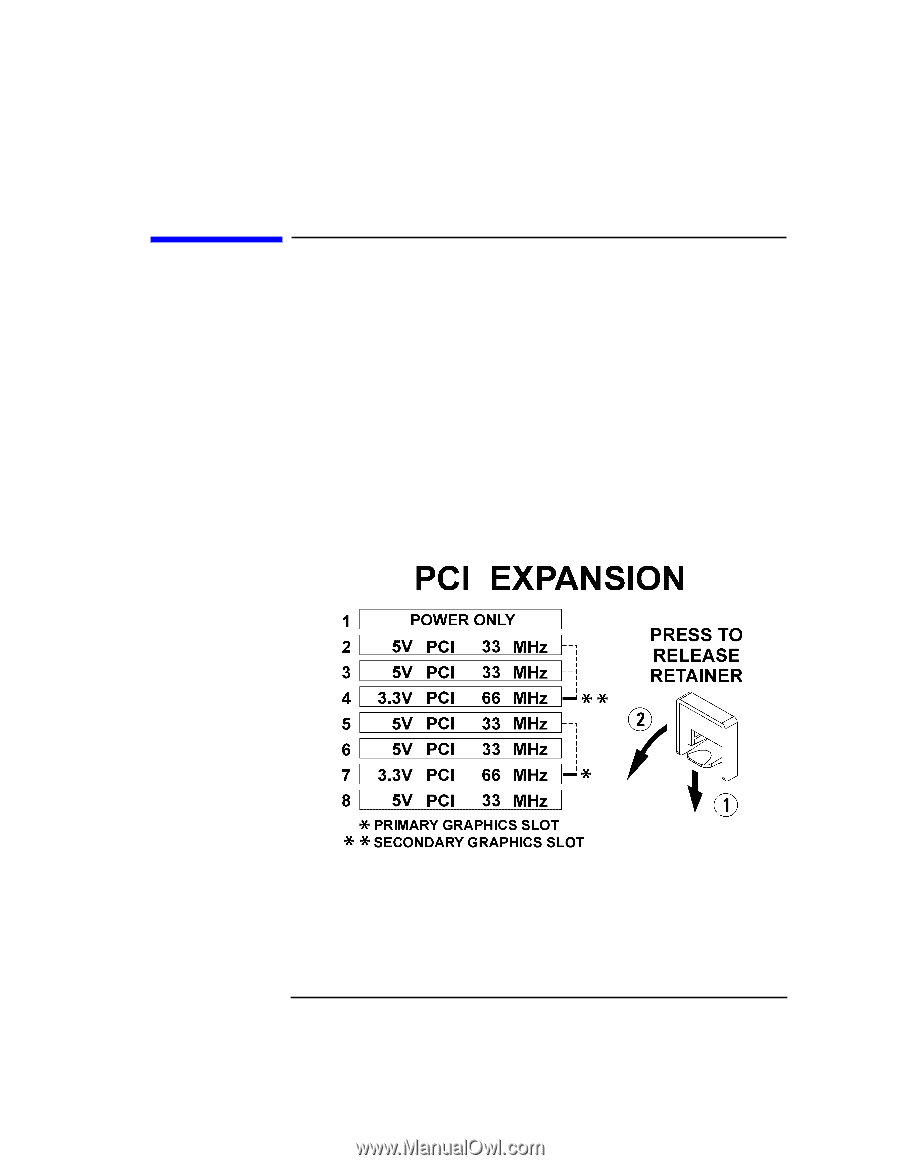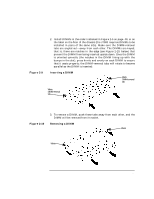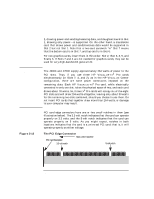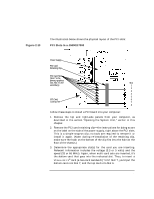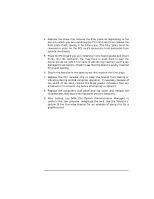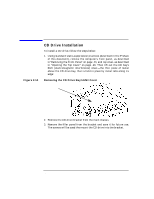HP Visualize J5000 hp Visualize J5000, J7000 workstations owner's guide (a4978 - Page 55
Installing a PCI-Type I/O Board, The PCI Slot Label
 |
View all HP Visualize J5000 manuals
Add to My Manuals
Save this manual to your list of manuals |
Page 55 highlights
Changing Your Computer's Hardware Configuration Installing a PCI-Type I/O Board Figure 2-11 Installing a PCI-Type I/O Board The J5000/J7000 are extensible by means of I/O cards that offer a variety of functionalities, and the kind of I/O cards supported are called PCI (Peripheral Component Interconnect) cards. PCI cards can be 3.3-volt or 5-volt cards (or both; these are called "universal" cards), and they can also be 32-bit or 64-bit cards, and 33MHz or 66MHz. The graphics boards supported by the J5000/J7000 computers are the HP VISUALIZE-FX2 Pro and the HP VISUALIZE-FX6 Pro. While these are universal cards and will work in any slot, they should be used in slots 4 or 7 to obtain optimal performance. Your J5000/J7000 computer's PCI assembly has eight 64-bit slots in the following arrangement (this information is also on the label on the floor of the right side of the chassis): The PCI Slot Label As the illustration above indicates, graphics cards should be inserted into the 66MHz slots in order to deliver maximum performance. Use Slot 7 first, and then Slot 4. Once Slots 7 and 4 are used, graphics cards can be added to any slot that physically has room, except Slot 1. Slot 1 is a power-only slot; that is, it doesn't offer data communication to the card inserted there. In other words, a two-board sandwich-main card in Slot Chapter 2 55
